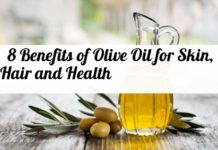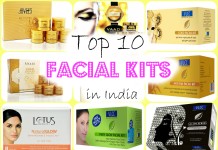 What Everybody Must Know About Shampoos:
What Everybody Must Know About Shampoos:
There are a few things everybody should know about shampoos. Most of the shampoos contain toxic chemicals that contribute to cancer, liver disorders and neurological diseases.
This could be one of the reasons why so many allergies, asthma, reproductive problems, neurological disorders, irritations and rashes, sinus problems etc have drastically increased since a few decades.
List of the dangerous chemicals which can be found in 90% of shampoo products:
Ammonium Laureth Sulfate:
It is a synthetic detergent. Apart from shampoo it is also used in bubble baths, hand wash, dish-washing liquid, also in car washes, garage floor cleaners and engine degreasers – and in 90% of products that foam. It can pose serious health threats because it could be contaminated with nitrosamines, which are carcinogenic.
Animals exposed to Ammonium Laureth Sulfate (ALS) and Sodium Lauryl Sulfate (SLS) experience eye damage, central nervous system depression, labored breathing, diarrhea, severe skin irritation, and even death.
SLS and ALS may also damage the skin’s immune system by causing layers to separate and inflame. It is frequently disguised in semi-natural cosmetics with the explanation “comes from coconut”.
Cocamide (DEA, DEA-CETYL phosphates, DEA OLETH-3 phosphates, Myristamide DEA, Stearamide MEA, Cocamide MEA, Lauramide MEA, Oleamide DEA, TEA-Lauryl Sulfate)
These chemicals are used as emulsifiers and foaming bases in the majority of body care products. They are used in shampoos to reduce the surface tension of liquid. Since they are derived from coconuts, people often see them as harmless natural ingredients. But, they can trigger allergic reactions in the skin and lungs when used in high concentrations. Also, they may lead to formation of nitrosamines, chemical compounds that can cause cancer. If you use a shampoo that has cocamide DEA, MEA or MIPA, make sure it also contains vitamin A and C, which can serve as nitrosamine blocking agents.
In spite of the fact that the FDA (The American Food and Drug Administration) has warned the industry of their potential danger since 1979. Furthermore, in 1998 a study by the NTP (American National Toxicology Program) seriously condemned their use and designated them nitrates and nitrosamins, cancer causing elements.
Dimethicone:
Dimethicone is a silicone product that’s used as a skin conditioning agent and emollient. Since silicone emollients are occlusive, they coat the skin, trapping anything beneath it, and do not allow it to breathe. Dimethicone not only creates a kind of film over our skin and pollutes our bodies but it also accumulates in our organs. In addiction, poisonous hydrochloric gas is emitted during the chemical production of this ingredient.
Fragrance:
Apart from shampoos, fragrance is added to most deodorants, sunscreens, skin care, body care and baby products. Fragrance is a way for manufacturers to disguise harmful ingredients and is virtually unregulated by the EPA or the FDA. Fragrance can indicate the presence of up to 4,000 separate ingredients. Almost all of them are synthetic. Symptoms include headaches, dizziness, rashes, skin discoloration, violent coughing and vomiting, and allergic skin irritations. Some cause brain damage or are neurotoxins. Avoid unless you can be sure they are not carcinogenic.
Imidazolidinyl urea and DMDM Hydantoin (Germall Plus, Germall II and Germal 115):
After parabens, these are the most used preservatives. They are well established as a main cause of contact dermatitis. They contain formaldehyde, which is not only an inexpensive preservative and disinfectant but also a suspected cancer-causing toxin. It causes allergic, irritant and contact dermatitis, headaches and chronic fatigue. The vapour is extremely irritating to the eyes, nose and throat (mucous membranes).
Sodium Lauryl Sulfate (SLS) and Sodium Laureth Sulfate (SLES):
Sodium Lauryl Sulfate (SLS) together with Sodium Laureth Sulfate (SLES) are commonly used in many soaps, shampoos, detergents, toothpastes and other products because they are very effective foaming agents. But did you know that the foamy effect of shampoo is purely aesthetic? It has absolutely no cleansing properties!
SLS and SLES are not carcinogens but they are probably the most dangerous ingredients in skin and hair-care products. They can also be found in toothpaste, where according to some studies it causes the recurrence of aphthous ulcers, commonly referred to in some countries as canker sores or white sores.
SLS is found in car wash soap, engine degreaser, toothpaste, lotions and garage floor cleaners. It is most often used to degrease car engines. When used in shampoo, apart from the nice foam it produces, SLS dissolves the oils on your skin, which causes a drying effect. It corrodes the hair follicle and impedes hair growth. It has been blamed for many cases of premature hair loss. It takes hair longer to grow when it has been affected by SLS.
But wait, there is more – SLS can also be absorbed into the body from skin application. Once absorbed, SLS mimics the activity of the hormone Oestrogen, leading to different health problems from PMS and Menopausal symptoms to dropping male fertility and increasing female cancers such as breast cancer.
Although SLES is considered less irritating than SLS, and according to toxicology research it is not a carcinogen, is commonly contaminated with dioxane, which is a known carcinogen. it cannot be metabolized by the liver and its effects are even longer-lasting.
Yellow 5:
You would think this is a harmless colorant but there is something more about it. Yellow 5 (together with other colors) is a coal tar derivative. The main concern about coal tar derivatives is that they cause cancer in animals, and they have also been found to cause potentially severe allergic reactions, asthma attacks, headaches, nausea, fatigue, nervousness, and lack of concentration.
The NPF states that coal tar contains approximately 10,000 chemicals, of which only about 50% have been identified and the composition of coal tar varies with its origin and type of coal used to make it. Coal tar causes increased sensitivity to sunlight, so skin treated with topical coal tar preparations should be protected from sunlight.
These chemicals are just a fraction of the danger lurking from most “beauty” products. But looking from the positive side, there is a great number of natural body care brands, natural health stores and independent sellers that are committed to use healthy, organic ingredients and who take great care in keeping us and the earth clean.
Sources and Further Reading:
National Health Information Centre









